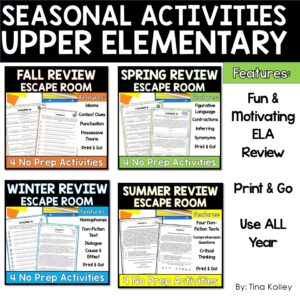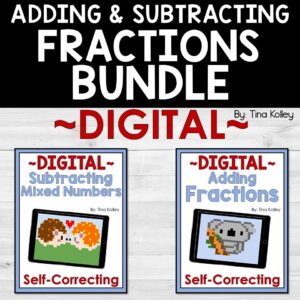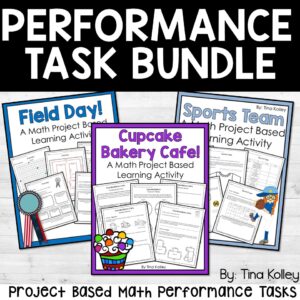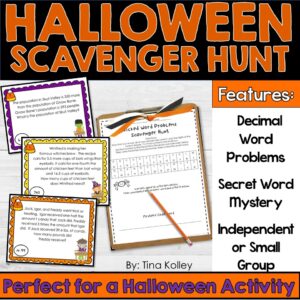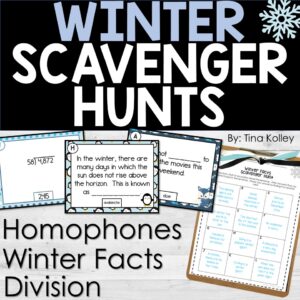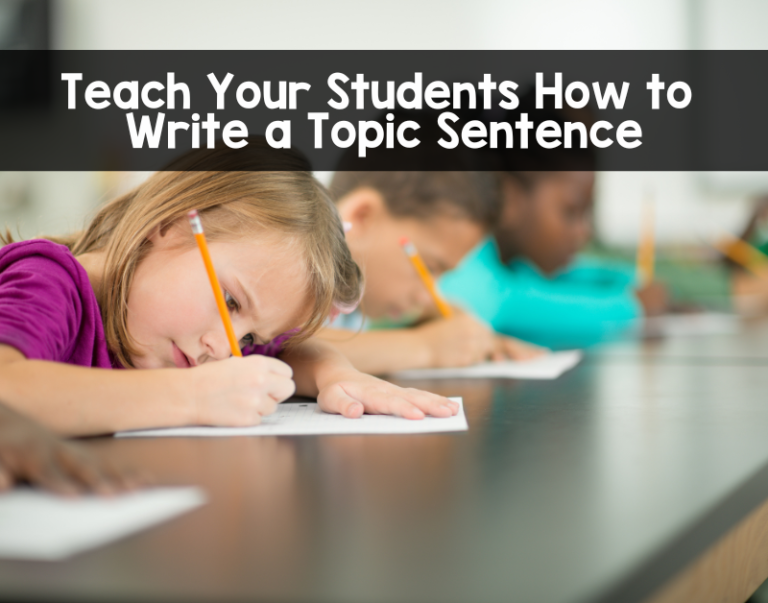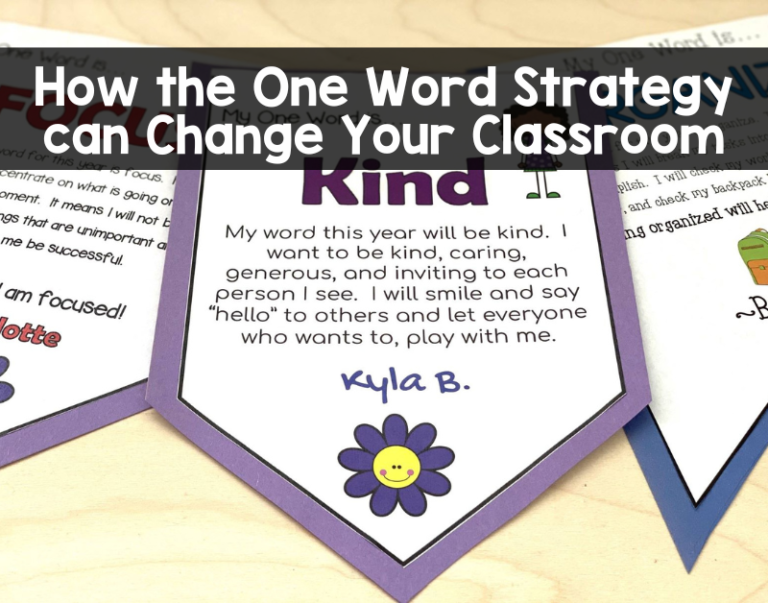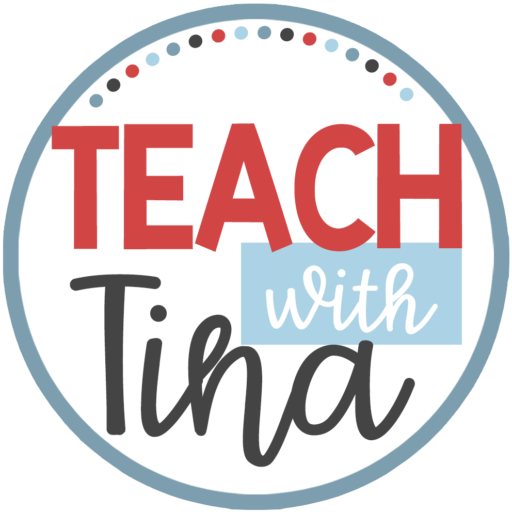You have just spent hours preparing and teaching a fantastic lesson. You hand out the practice that goes along with it and hope to have a few minutes of quiet when suddenly you hear, “I’m done! Now, what do I do?” Well, you have an early finisher, aka a fast finisher, on your hands, and you need to keep them busy, quiet, and learning so they don’t bother you or other students working quietly.
But how??
Here are a few of my favorite structured and educational ideas that will not only keep your early finishers engaged but also enhance their productivity
Puzzles and Brain Teasers
Puzzles are not just fun and games. They are excellent tools for stimulating critical thinking and problem-solving skills, and they play a crucial role in developing tenacity. By offering puzzles at various levels, you’re not just challenging your early finishers, but also boosting their self-esteem (You can do it! Keep trying!) Many students find puzzles engaging, making them an easy win for classroom engagement.
Logic Puzzles: Challenge students with puzzles that require deductive reasoning. Here are some FREE ones to try!
Word Searches and Crosswords: These activities are great for building vocabulary and spelling practice. I love giving my students a challenging word search that is coordinated with a unit we are studying! They are perfect for independent or partner work. Here are some I made for my classroom.
Cryptograms: These puzzles enhance analytical skills as students decode messages using a cipher.
Escape Rooms: My students love a good Escape Room, and so do I! They give students a goal, require them to use their problem-solving skills, and can be completed independently or collaboratively! Plus, there is always a reward when they “escape.” These puzzle-type activities can be used in conjunction with a reading passage, math problem-solving, or any puzzle. I’ve created a few that my students love! See them here.
Writing Centers
Writing can be difficult for upper elementary students. Many times, they stare at the blank page and just don’t know what to write, so give your early finishers a chance to write whatever they want! For these students and you prolific writers, a writing center can be a haven for creativity and self-expression.
Set up stations with:
Would You Rather Questions: These prompts can spark interesting debates and essays. I have one in my Amazon store if you’re interested.
Writing Prompts: Provide a variety of prompts that encourage storytelling, reflection, and imaginative thinking. Take a look at these Free ones!
Fun Stationery: Find creative writing papers, journals, and special pencils. Having special supplies and some freedom to create can help even the most reluctant writers put something down on paper.
Reading Corner
Silent reading at your desk does not always work for every student, but a cozy reading corner with a diverse selection of books can transport that same student to new worlds and ideas. Your early finishers will love the opportunity to read away from their desk.
Try to include:
Fiction and non-fiction books are tailored to their interests, lives, and reading levels.
Magazines and graphic novels to cater to different reading preferences.
Class books from the current or prior year.
Math Centers
Even early finishers need math practice! Make reviewing math fun and collaborative with interesting math activities such as:
Collaborative Coloring: Students work together to solve math problems and then color a picture according to their answers. They check by comparing their colors to a partner or your answer key. To see what collaborative coloring looks like, take a peek here.
Digital Pixel Pictures: Use technology to create pixel art that emerges as students solve math problems. These are so much fun and can be used for classwork, homework, or a special treat. I have a few in my TPT store for you to check out.
Performance Tasks: Provide real-world math problems that require critical thinking and application of various math concepts. Many teachers think of Performance Tasks as something you practice right before testing, but they are also a great long-game fast-finisher activity!
Educational Videos
Short, educational videos can be both entertaining and informative. Assign a few to your early finishers and watch more studetns being incentiviesed to work toward being able to wathc a video, even and educational one. Create a library that includes:
How to Draw Tutorials: Encourage artistic skills with step-by-step drawing videos. My students LOVE these!
Science and Nature Documentaries: Spark curiosity about the natural world and scientific phenomena.
Social Studies Documentaries: Bring history and cultural studies to life with engaging documentaries.
Learn a Foreign Language Videos: Introduce your students to a new language or help your ELL students practice English Language skills discreetly.
Headphones are a wonderful thing!
If you are concerned about attention, have questions about the videos handy, or ask students to write a summary.
Simple Crafts
Hands-on activities like crafts can be both relaxing and educational. They require minimal supplies and can be a “take-to-your-seat” activity.
Origami: Teach students the art of paper folding, which enhances fine motor skills and patience. You don’t have to have special origami paper; any copy paper will do. As a bonus, teach your students how to cut a square from a rectangle piece of paper. Life skills!
Macrame: Macrame is making a comeback! Introduce students to this decorative knotting technique, a fun way to learn about patterns and textures. All you need is some twine and a book or instructional video.
Scavenger Hunts
Scavenger Hunts are dynamic and interactive ways to reinforce learning. The best part? They can be “take to your seat” activities!
You can design scavenger hunts that include reading comprehension, math problems, or even review social studies or science concepts.
Create scavenger hunts around your curriculum and put them in a binder or box, similar to task cards. Students can take them to their desks and work quietly. You can also hang them on a bulletin board, where students can quietly solve the problems while having the opportunity to move away from their desks.
Take a look at some fun Scavenger Hunts in my TPT Store.
Want to try a FREE Halloween Scavenger Hunt? Grab it here!
Tips for Making Fast Finisher Activities Work for You
Expectations: Take the time to teach your students the exact behaviors and expectations you have for fast-finisher activities.
Keep it Fresh: Rotate activities regularly to keep them fresh and exciting.
Clear Instructions: It’s important to ensure that each activity has clear instructions and objectives. This will empower your students to be independent and self-directed.
Student Choice: Allow students to choose activities based on their interests to increase engagement and motivation.
Peer Collaboration: Encourage students to collaborate on specific activities, fostering collaboration and communication skills.
My hope is that by incorporating these diverse and enriching activities, you can ensure that your fast finishers remain engaged and productive, turning their free time into an opportunity for continued learning and growth.


